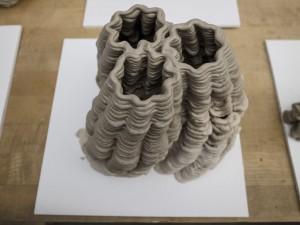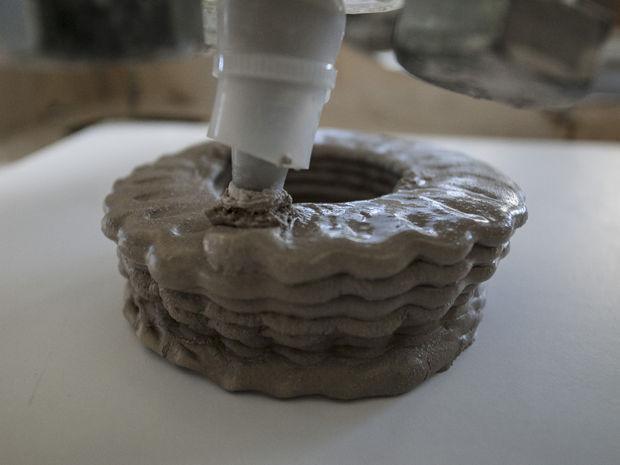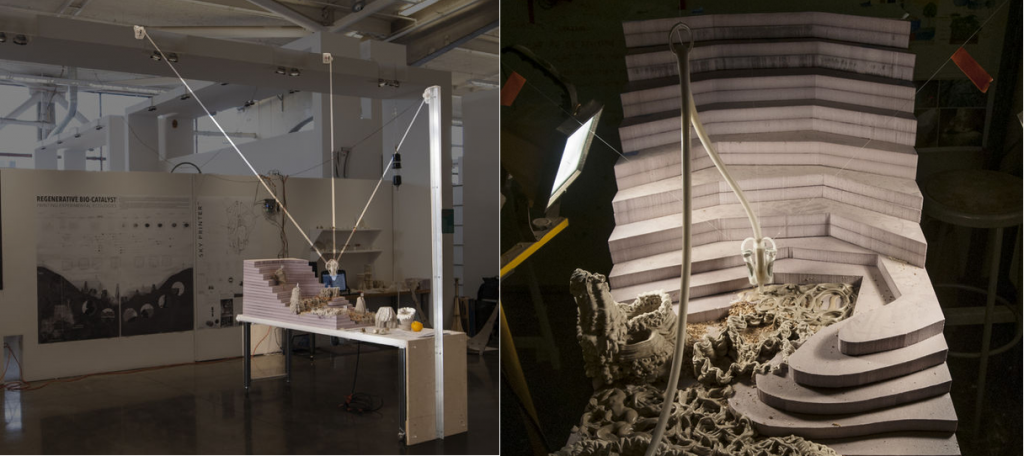And the evolution of the 3D printer continues…
I magine 3D printing on an even larger scale — in more remote areas. As the words 3D printing and sustainability keep popping up together in the same sentences, so do questions regarding what types of conditions 3D printers will be able to withstand out in the field, in the outback, and in potentially rigorous and unstable situations. We may want to put this technology to use in isolated areas, developing countries, and space — but can the machinery actually stand up to the test?
magine 3D printing on an even larger scale — in more remote areas. As the words 3D printing and sustainability keep popping up together in the same sentences, so do questions regarding what types of conditions 3D printers will be able to withstand out in the field, in the outback, and in potentially rigorous and unstable situations. We may want to put this technology to use in isolated areas, developing countries, and space — but can the machinery actually stand up to the test?
Two astute architectural students from California College of the Arts in San Francisco are tackling this question with a new design for a 3D printer that could be used for printing with a variety of materials, but was centered around their ‘love/hate relationship’ with 3D printing in clay. Upon completing their project and design, which worked in testing and 3D printing with clay, they surmised that the potential uses for the Sky Printer are enormous, especially when applied to other uses like performing as a CNC router or grappler in warehouse venues.
 Thomas Monroy and Taole Chen had two months to design a project in their Creative Architecture Machines course. Pointing out that they only had a short amount of time to work on it but that they think it is an idea with great potential, we can all agree that it’s surprising no one has been dedicated to working on something like this. The design is fully outlined in an Instructable.
Thomas Monroy and Taole Chen had two months to design a project in their Creative Architecture Machines course. Pointing out that they only had a short amount of time to work on it but that they think it is an idea with great potential, we can all agree that it’s surprising no one has been dedicated to working on something like this. The design is fully outlined in an Instructable.
Certainly this is innovation on top of innovation, as Monroy and Chen have taken a technology which many see as akin to producing magic, and literally out of thin air designed a way to make it work on a much different scale, while reducing cost, complexity, and space requirements.
Logically, for a 3D printer operating in a remote and perhaps hostile environment, stability is the first concern. The architects tackled this right away by designing the Sky Printer with a cable construction that hooks onto rings holding the printing nozzle in an anchoring system using weights. It does not require a platform due to the above-ground design, which “hijacks existing structures and topography to construct its own coordinates system.” The design is brilliant in its austere, purely utilitarian design which goes vertical and high. With several anchoring points to affix the cables to, stability is set.
The architects point out that there is room for flexibility in terms of the type of nozzle used, as well as tool heads. Their central focus was on printing in clay, so while the wiggling of the nozzle could be construed as detrimental and requiring refinement for printing with a different material, the movement of the nozzle worked for them and they did not fix that potential issue. Everything about the design and its setup (in less than an hour) is streamlined, simple, and highly efficient, including the wiring, which basically consists of:
- USB port
- Terminals for steppers
- Computer fan connection
- DC power supply
While all the above exercises were simple and easy to maneuver, according to the architects, what is of most crucial importance in the setup and configuring is the software. They point out that user comprehension of the software is of utmost importance here with the use of coding in Grasshopper, which is a visual programming language. Users would need:
- Grasshopper, downloaded
- Rhino 5 modeling software, downloaded
- Firefly plug-in
The last issue to consider is if one would be using this 3D printer with clay as a material. Monroy and Chen are the first ones to admit they are crazy about printing with clay. If you are looking for a clay recipe for your 3D printer, click here for their formula. While clay is one material the Sky Printer could work with, Monroy and Chen also stress that this highly adaptable system could be used also as “an exchangeable tool set.” That plays directly into their concept of using these machines in space, in mines, abandoned areas, and anywhere with vertical space that could be easily used for maximum efficiency. Simplicity in design means less chance for mechanical breakdowns and failures, as well as ease in putting it in remote locations. With the possibility for remote control, destinations for the Sky Printer are boundless.
Have you ever considered a 3D printer featuring a design without a traditional platform? What do you think are the implications for using such a design as this? Share your thoughts with us in the Sky 3D Printer forum over at 3DPB.com.
Subscribe to Our Email Newsletter
Stay up-to-date on all the latest news from the 3D printing industry and receive information and offers from third party vendors.
You May Also Like
3D Printing Financials: Fathom Struggles in Financial Quicksand During Critical Transition
Facing a year of key transitions and financial pressures, Fathom (Nasdaq: FTHM) has filed its annual report for 2023 with the U.S. Securities and Exchange Commission (SEC). The document outlines...
Latest Earnings Overview for Australian 3D Printing Firms Titomic and AML3D
Australian 3D printing manufacturing firms Titomic (ASX: TTT) and AML3D (ASX: AL3) reported their financial results for the period from July to December 2023, marking the first half of their...
3D Printing Webinar and Event Roundup: April 7, 2024
Webinars and events in the 3D printing industry are picking back up this week! Sea-Air-Space is coming to Maryland, and SAE International is sponsoring a 3D Systems webinar about 3D...
3D Printing Financials: Unpacking Farsoon and BLT’s 2023 Performance
In the Chinese 3D printing industry, two companies, Farsoon (SHA: 688433) and Bright Laser Technologies, or BLT (SHA: 688333), have recently unveiled their full-year earnings for 2023. Farsoon reported increases...



































